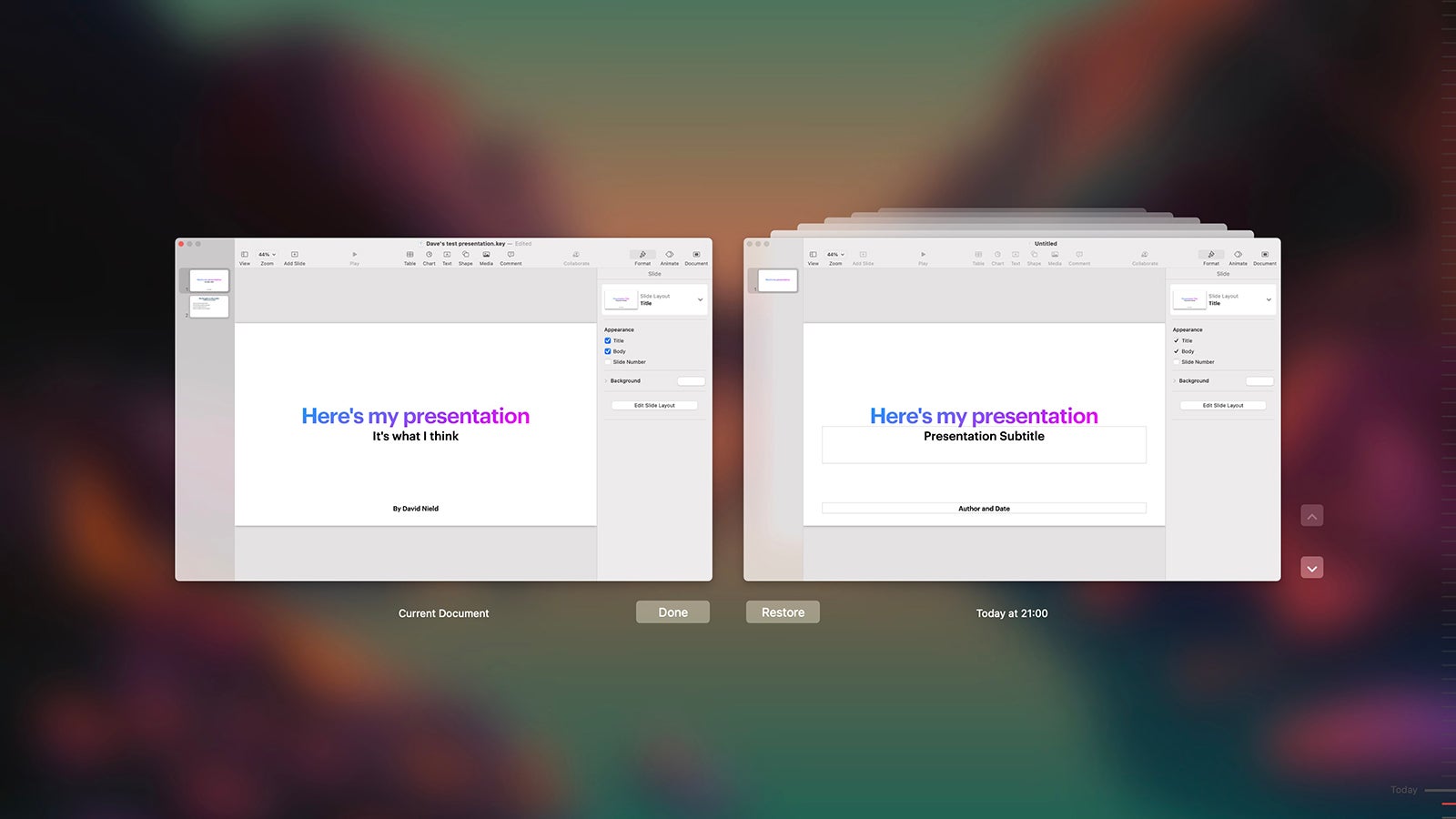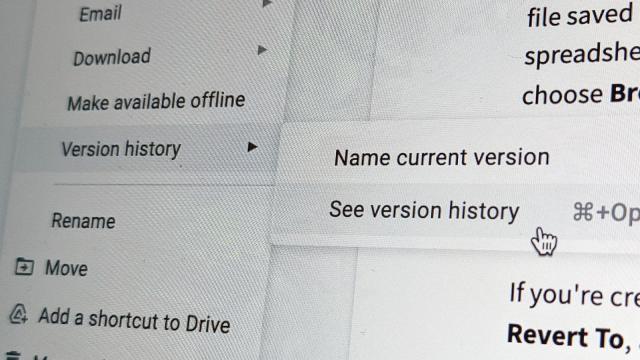The days of pressing the wrong key and losing a whole week’s worth of work should be long gone now. Today’s cloud-based apps keep duplicate copies of everything, saving you the hassle of manual backups. These programs also have detailed version histories, so you can quickly roll back to a different version of a file from an hour, a week, or a month ago.
Besides the instructions laid out below for the most well-known application suites out there, remember the backup options available elsewhere. If you use Dropbox, for example, file versioning is built right in: From the web interface, right-click on any file and choose Version history to see versions from the past 30 days (or 180 days if you’re on a Professional or Business plan). Multiple file edits can be undone with Dropbox Rewind.
The backup solutions built into Windows and macOS support file version histories as well. On Windows, you can find File History by opening the Settings pane and choosing Update & Security and then Backup. On macOS, you want to choose Time Machine from the System Preferences pane.
Google Docs, Sheets, and Slides
To roll back to an earlier point in time in a document, spreadsheet, or presentation in Google’s suite of online apps, choose File, Version history, and See version history. You’ll see major edits, together with the time they were made and the person who made them, if you’re collaborating on something. Click on one of the arrows next to a version name to get even more choices.
To go back to an earlier version of a file, click on it (which will display the differences with the current version on screen), then select Restore this version. The current version of the file won’t be erased completely — it’ll just be added to the list as an older version, so you can get back to it if you need to.

Click the three dots next to a file version and you can duplicate it or name it. Naming versions just makes them easier to sift through — note the Only show named versions toggle switch at the top of the list — and you can also do this by selecting File, Version history, and Name current version. You can have 40 named versions of documents and presentations, and 15 named versions of spreadsheets.
Google Docs, Sheets, and Slides will keep an unlimited number of versions on file for you. If you accidentally delete a file and want to bring it back, you’ve got 30 days before it’s gone forever: Head to the Trash folder in your Google Drive account, right-click on the file you want to bring back, then choose Restore.
Microsoft Office
File versions are only available through Microsoft Office programs if you’ve chosen to save them in OneDrive — the cloud storage platform comes with versioning support that Office is able to tap into. It’s another reason to keep your files saved in the cloud with Microsoft rather than anywhere else, and as you would expect there are other integrations between OneDrive and Office that you can take advantage of, too.
You can see all the previous versions of a file in Word, Excel, or PowerPoint on Windows by choosing File, Info, and Version History. (If your file isn’t already in OneDrive, you’ll be prompted to copy it there.) All of the available versions appear on the right, together with the time they were edited and the user who did the editing. Click Open version under any of them to go back to an earlier version, which opens in a new window.

With the earlier edition of the file also open, you can choose Compare to see all the differences between it and the current version, or Restore to have this older version become the current one. The comparison screen is quite a comprehensive one, giving you a full view of the edits that have been made since this incarnation of the file was the one you were working on.
It’s slightly different if you’re using Office on macOS, though again you need to have the file saved in OneDrive for file versions to be available. Click the name of the document, spreadsheet, or presentation up on the title bar at the top of the program window, then choose Browse Version History. Click on any of the files listed and you get the same Compare and Restore options as you do on Windows.
Apple Pages, Numbers, and Keynote
If you’re creating files in one of Apple’s productivity applications, you need to click File, Revert To, and then Browse All Versions to see a full history for your document, spreadsheet, or presentation. Alternatively, choose Revert To and Last Saved to undo all the changes you’ve made since you last saved your file.
Versions show up in a neat full screen layout, with a timeline down the right-hand side of the screen. Use the arrows on the right (or the timeline) to go forward and backward through the versions, and Restore to go back to a particular version. If you do decide to go back to an earlier incarnation of a file, then the version you’re currently working on becomes the most recent version — you can still get it back if required.

You can actually carry on editing the current version of the document, spreadsheet or presentation in this Browse All Versions view — click Done whenever you want to go back to the normal view. This can be handy if you need to refer to something from an earlier incarnation of the file. There’s no limit to the number of versions of a file you can save, and they’ll be saved automatically as you work.
Another trick you can do from this screen is to hold down the Option key, which turns the Restore button into Restore a Copy — this means you can view a copy of that version of the file while leaving the old version untouched. Finally, note that you can copy text and other elements from the earlier file versions on the right into the current version on the left without having to restore them.
